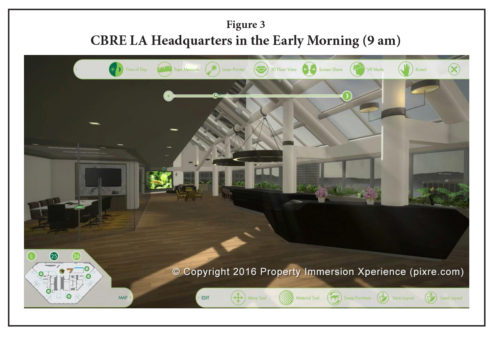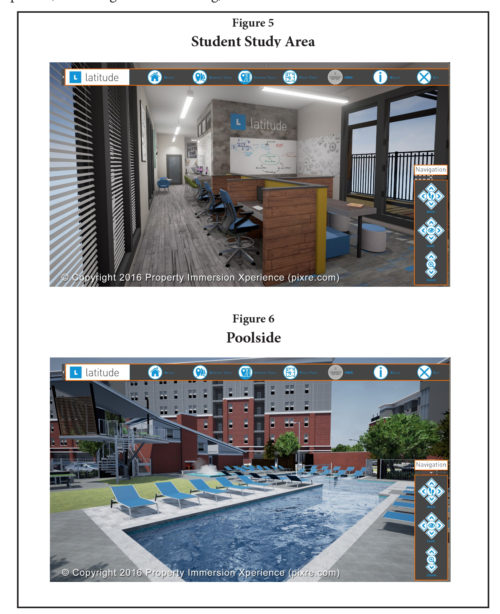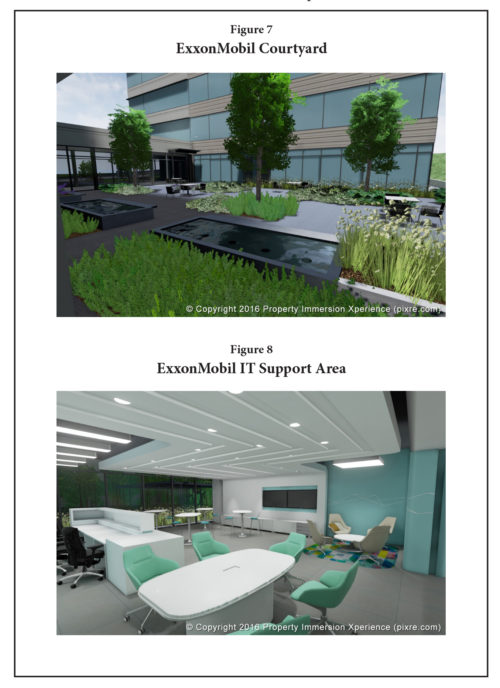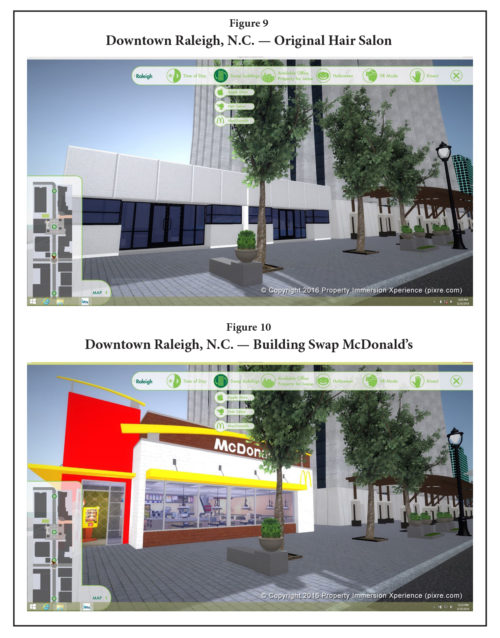Introduction
Virtual technology (“VT”) is the latest overnight sensation to hit the market. And like many overnight sensations, it has been around for quite a while. One of the first commercial uses of virtual technology, then referred to as 3-D, was in video games over 30 years ago. However, the growth of virtual technology in the form of virtual reality (“VR”), augmented reality (“AR”) and, the latest evolution, mixed reality (“MR”) have dramatically accelerated over the past few years. Facebook’s purchase of Oculus for $2 billion in 2014 caused both consumers and investors to take notice of what was considered a fledgling industry up to that point.
The advent of smartphones has been a driving factor of this acceleration. The miniaturization of components needed to put the power of yesterday’s super computer in someone’s pocket has provided the components needed for the hardware to catch up to the capabilities of the software and become more affordable. As a result, a range of industries have begun to develop uses for the technology.
This article will explore the wide range of applications within the commercial real estate industry. The use of VT has the opportunity to transform the way properties are marketed, transacted and analyzed. The technology also provides the possibility of material efficiency gains and expands the definition of what the “market” is for a particular property.
The industry’s use of VT has been limited until now as a result of cost and access. However, cost and accessibility have been dramatically improved over the past 12 to 24 months. It appears the use of VT may be on the verge of the tipping point. If so, not using the technology may put a professional or property at a distinct disadvantage.
For those not familiar with it, a brief primer on the technology and the industry follows. The article then provides an overview of the applications of and benefits to using VT for commercial real estate.
What is Virtual Technology?
Virtual technology encompasses VR, AR and MR. VR allows us to not only view, but experience objects and places as if we were actually there. Users virtually enter the digital environment and can make customization decisions in real-time such as interior finishes, furniture and amenities, or even entire buildings.
The primary goal of VR is to provide the user with an immersive experience that makes them feel as though they are somewhere else, whether it be real or fictional, existing or not. The key word is “immersive.” Some types of VR provide a more immersive experience than others.
Currently there are two main types of VR experiences, Spherical or Cylindrical Panoramic images or videos (Figure 1), and Realtime-3-D Simulations based on photo-realistic game-engine technology (Figure 2). The former allows the user to look in any direction from a series of predetermined camera locations or along the path of a moving video camera.
 Note that Figure 1 is composed of photos of the actual space that have been stitched together. Figure 2 is a screen capture of a Realtime-3-D virtual model that allows users to freely navigate through and make changes to the space in the model.
Note that Figure 1 is composed of photos of the actual space that have been stitched together. Figure 2 is a screen capture of a Realtime-3-D virtual model that allows users to freely navigate through and make changes to the space in the model.
Augmented Reality is what the now discontinued Google Glass used. AR allows users to superimpose data into the real environment, much like a heads-up display. Many are familiar now with AR from the recent viral phenomenon Pokémon Go, achieving more than 100 million downloads in a few weeks. What is evolving now is combination of VR and AR into mixed reality.
Mixed reality is still evolving, but will combine the best of VR and AR into a seamless experience. Currently Microsoft’s HoloLens and Magic Leap are the leaders in this space and will initially focus on enterprise applications. Imagine wearing glasses while walking into a mall that allows you to see data overlays and responsive virtual objects that look just as realistic as those in the real world. As you walk through the mall you can change an existing store to a different operator and see the impact on foot traffic and sales for surrounding stores.
While AR may have some applications in commercial real estate, VR is considered to have a broader base of application (i) due to the rapidly declining cost of creating, distributing and viewing VR content, and (ii) that various studies have shown 75 percent of people can’t visualize what an empty space can look like when built out or look at 2-D floor plan and develop an accurate 3-D mental image of a building’s design. When combined with all of the choices a client has to make regarding finishes, lighting, amenities, furnishings and decorations, the issue becomes compounded exponentially.
Accordingly, the use of virtual technology can bring another layer of efficiency to the commercial real estate industry resulting from savings in both time and cost. In addition, the technology can assist with decision making such that it can help compress transaction cycles, which accelerates revenue.
Understanding the Virtual Technology Industry
The iPhone revolutionized the mobile communications market. It set new boundaries on smart phone capabilities, impacted countless global industries and their economies, and rewrote the meaning of being connected to the information, people and the world around us. As rapid as that market grew, the VR hardware market is expected to grow nearly five times faster than the iPhone in the next three years1 to be worth $7 Billion by 2018 and $150 Billion by 2020.2 Goldman Sachs estimates the market will be between $80 billion and $182 billion by 2025.3 It is important to understand that all of these growth projects assume unit prices are declining 5 percent to 10 percent per year.
The software side of the industry is more mature than the hardware side. The gaming market overtook the movie industry approximately 20 years ago. Consider that while the movie Star Wars VIII (2015) grossed just under $250 million on its opening weekend, the video game Call of Duty: Ghosts (2013) achieved sales of over $1 billion in its first day in stores. Software costs have dropped dramatically, with the price of the underlying game engines going from millions of dollars to an annual subscription cost of just several thousand dollars.
In terms of hardware, a VR model can now be experienced on a computer, tablet, phone or television. To get the full VR experience a Head Mounted Display (“HMD”) is typically used. There are three general categories of HMDs:
- Foldable Smartphone Driven HMDs — Examples include Google Cardboard and Wearality Sky. These are foldable, portable and cost effective ($8 to $15) solutions, especially for use at tradeshows, in marketing campaigns and other demonstrations.
- Rigid Smartphone Driven HMDs — Examples include the Samsung Gear VR and the forthcoming Apple VR. These units provide a similar experience to the more expensive units at a fraction of the cost ($100 vs $600 to $800), but are not as portable or disposable as the foldables.
- Computer Driven HMDs — The two top contenders in this category are the Oculus Rift ($600) and the HTC Vive ($800). These provide a high-end VR experience, but require a computer with a dedicated graphics processing unit (GPU) which can cost an additional $1,000 or more. With the required cabling, power supplies and external sensors, these are not as portable as any of the other HMDs, and require setup and calibration.
In short, the delivery capability (hardware) is finally catching up to production capabilities (software) and the cost of both is dropping quickly. The variety of Virtual Reality consumer products is greatly accelerating, while prices are dropping and performance is increasing.
Creating a Virtual Environment
Creating a virtual, immersive model of a space, building or more starts with physical information about what is to be modeled.
For an existing property, a PDF of the floor plan, some photos and measurements would be enough but not ideal, as it would take substantially longer and cost more to produce a model.
If plans are to be used, which is a necessity if a property has yet to be built, a 3-D CAD file or BIM file is the best place to start.  If these are not available, other options for “capturing” the space and converting into the required digital format include photography, photogrammetry and LIDAR using special cameras, drones or, for larger areas such as a campus or city, fixed wing aircraft.
If these are not available, other options for “capturing” the space and converting into the required digital format include photography, photogrammetry and LIDAR using special cameras, drones or, for larger areas such as a campus or city, fixed wing aircraft.
Once the capture is complete, engineers and graphic artists work together to create a realistic model that is optimized for size, which is driven by the number of polygons used to create the model. A key factor for optimizing the model is accounting for how the model will be used and distributed. Delivery options aside from a computer or television may include over the web, on mobile devices, through an HMD or on a touch-screen kiosk.
Another factor that needs to be accounted for is what functionality needs to existing in the model. Options include the ability to:
- Dynamically change the environment — moving walls or changing windows, furniture, finishes (e.g., floor covering, wall color, counters, cabinets, etc.). The user can design or customize any space while standing within it virtually today.
- Change the time of day, providing a real-time lighting/shadow study as shown in Figures 3 and 4.
- Take measurements.
- Use a laser pointer.
- View each floor as an isometric illustration (from any angle).
- Use Multi-Player capability to give individuals or groups of people in different locations guided tours.
- Have live interaction with embedded video chat.
- Use hand gestures to control the 3-D scene using a Kinect.
- Embed audio and video or even live TV feeds, which can be used to personalize the space.
- Incorporate data.
 Given the variety of potential VR experiences, it is important to focus on the project’s objectives and delivery method (type of hardware, web) before choosing a particular VR solution. If the answer to all of the below questions is yes, then Spherical or Cylindrical photo- or video-based panoramic scenes may be your best and lowest cost option.
Given the variety of potential VR experiences, it is important to focus on the project’s objectives and delivery method (type of hardware, web) before choosing a particular VR solution. If the answer to all of the below questions is yes, then Spherical or Cylindrical photo- or video-based panoramic scenes may be your best and lowest cost option.
- Does the property already exist?
- Is it photo ready?
- Is this a short-term or one-time project where you only want to depict the property in its current state?
However, a virtual, immersive model is the better option in the following instances:
- The property does not yet exist or is not yet completed
- There is a desire to start the sales or leasing process prior to completion
- Providing prospective buyers or tenants with the ability to select and depict numerous finishes and amenities is desired
- The market includes remote clients
The ultimate cost of the model is a function of the inputs available (PDF, 3-D CAD, LIDAR capture, etc.), level of realism and detail desired (grayscale to photo-realism, actual furniture and artwork) and types of delivery methods required. In general, the cost of 3-D virtual environments have followed the other industry trends, falling significantly over the last three to five years. What would have cost a minimum of $2.00 to $3.00 per square foot three years ago can now be completed for $0.50 to $1.00 per unique square foot. Individual spaces in a building may be a low as $0.10 to $0.25 per square foot.
Applications and Benefits of VR to commercial real estate
One of the main uses of VR for real estate is marketing. While the cost of a virtual model may seem high to some, the cost can be offset through the reduction of other marketing spend, a reduction of holding costs by compressing the transaction cycle and accelerating cash flow, which also reduces the risk of closing. The model can also be repurposed for use in facilities, asset and property management. A VR model can save time and money in terms of making design decisions more quickly and avoiding mistakes during the buildout of a space. Similarly, VR models can be used to facilitate and make planning meetings or economic development agency initiatives more accessible and efficient by putting models online to help make real-time changes, by any or all of the stakeholders.
Transaction friction can also be reduced, as potential buyers or tenants can “see” a range of properties without having to travel to each location. Imagine the productivity gains over the course of a year from being able to see ten properties without leaving one’s office in the time it would take to drive to and from just one property. The use of a VR model can also expand the market for buyers, as the entire globe is now able to see the property. Brokers are able to measure reaction in real-time via embedded audio and video capabilities. This also makes brokers more efficient, as they do not need to coordinate logistics for and host extensive property tours that undoubtedly will include properties that are not given any consideration by the client.
What follows are some specific examples of how VR models can be used that allow the benefits outlined above to be achieved.
Developers — Provide a complete showroom experience to local and remote clients that allows them to select their own finishes, furnishings and other amenities — before ground breaking. Buyers/tenants can instantly see themselves in the space the way they want it, creating the opportunity to shorten sales cycles and sellout periods as well as reduce holding costs. This applies to all types of commercial and residential properties, including student housing, shown in Figures 5 and 6.
Investment Sales Brokers — Show prospective buyers a property without anyone needing to physically be at the property. This will save time and allow the marketing of any property to a global audience.
Leasing Brokers and Owner/Operators — Use VR tools to complete test fits of spaces for potential tenants in real-time, online or on site, without the need to wait for an architect. The resulting model can be the foundation for the architects, engineer and other designers. Further, this file could be rapidly upgraded to a fully immersive VR experience since it would be created using the same technology.
Retailers — Mall operators or business associations and improvement districts can use VR models to bridge the clicks-to-bricks gap. Online events or games (such as a Halloween scavenger hunt) could be used to provide promotions (coupons, discounts) that can only be used in a store.
Property and Asset Management — Property and space availabilities, occupancies, maintenance requests or records and building operational data can be integrated into the virtual models.
Hotel Operators — A virtual model would allow potential guests to experience the rooms and amenities along with views in a way previously not possible. The ability to use data layers, website tracking tools and artificial intelligence provide the opportunity for a major advance in revenue optimization models.
Construction Management — Architects, design firms, construction firms and their clients can benefit from an iterative review of a virtual model, which can expedite the approval process and change order management by all stakeholders. In addition, if an issue arises, all of the stakeholders can instantly be in the space from remote locations to see and better understand the problem, which should allow for a more rapid decision in how to resolve it.
 Corporations — Figures 7 and 8 are virtual scenes created from the plans and specifications of ExxonMobil’s new corporate headquarters. The model was built prior to construction to mitigate change management issues related to their relocation by allowing employees to become familiar with their new work environment before construction was completed.
Corporations — Figures 7 and 8 are virtual scenes created from the plans and specifications of ExxonMobil’s new corporate headquarters. The model was built prior to construction to mitigate change management issues related to their relocation by allowing employees to become familiar with their new work environment before construction was completed.
Universities — Campus models can be used for marketing, recruitment, student orientation, alumni outreach, and engagement of students, faculty and graduates. The model could also be used for facilities management and security purposes. In addition, the model could also serve as another avenue of revenue if schools have or plan to have sponsorships.
Government Agencies — A virtual neighborhood or city model can be a powerful planning tool that creates efficiency in the review and decision making process as well as a marketing engine and a revenue generator. Enabling data layers and artificial intelligence gives economic development agencies a powerful tool that can accelerate the entire process.
Just as furniture can be swapped within a building using VR technology, entire buildings can be swapped to show what they would look like at a particular location where an existing building is to be torn down or renovated. Figure 9 shows an existing hair salon in a location, where Figure 10 shows a McDonald’s that is swapped in place of the hair salon. If the property data sets are incorporated, the impact on foot traffic and retail sales can also be simulated.
Virtual environments can also be integrated with databases such as information about available properties, as shown in Figure 11. As someone virtually walks through downtown Raleigh, N.C., available spaces are highlighted and details pop up as they approach the building.
11. As someone virtually walks through downtown Raleigh, N.C., available spaces are highlighted and details pop up as they approach the building.
Much like campus models and retailers as discussed above, city models can incorporate billboards, pre-recorded or even live video screens that provide advertising opportunities that don’t exist elsewhere, as depicted in Figure 12. A more subtle approach can also be taken by using product placements such as having a certain company’s vending machines on every corner.
Summary
The use of VR in commercial real estate is close to the tipping point as result of the cost and technology barriers being greatly reduced. The decline in costs, the ability to reduce costs in the real estate life cycle, the positive impact possible on revenue and the efficiency achievable has made the use of the technology feasible. In fact, the return on investment in some instance can be dramatic.
 One of the last barriers is for the industry to gain a better understanding of technology — how it can be used and the benefits that can be derived. As commercial real estate continues to mature as an asset class and must compete for capital against other asset classes, leveraging virtual technologies can help reduce transaction costs and risk, operating expenses and inefficiency, while accelerating revenue in a way that could fundamentally improve the asset class in the future.
One of the last barriers is for the industry to gain a better understanding of technology — how it can be used and the benefits that can be derived. As commercial real estate continues to mature as an asset class and must compete for capital against other asset classes, leveraging virtual technologies can help reduce transaction costs and risk, operating expenses and inefficiency, while accelerating revenue in a way that could fundamentally improve the asset class in the future.
It may not be long before it will be necessary for many participants in the commercial real estate industry to incorporate VR into their business strategy to remain competitive. Why would any owner want to wait a week or two to have a physical test fit done for a tenant if their competitor is using VR to do them instantly on-site or over the web and can also provide the prospective tenant with a cost estimate to finish and furnish the space? VR will also change the residential market. High-end homes can now be marketed globally and allow potential buyers to tour the property without having to get on a plane, as well as see their renovation vision before any work is started.
Condo developments and subdivisions can also extract tremendous benefit from VR models. Virtual units can be built during the planning/approval process so that pre-sales can begin the moment the plan is approved. The time and cost of building models, furnishing them and holding them out from being sold until the end is eliminated. Other holding costs such as construction loan payments and real estate taxes can be significantly reduced. That means either increased NPVs and IRRs for developers using the technology or those not using it become less competitive and profitable.
VR models can be used throughout the life of a property. They effectively become part of the asset if done well and maintained. A VR model can be used from construction management through the leasing and/or sales process, and it can function as an asset, property and facilities management tool.
The time for VR in the real estate industry is upon us. The cost of model creation and effective, flexible delivery of models has made it affordable and will only get better. The largest barrier is knowledge and awareness of the technology and its capabilities, which is currently compounded by focusing on the cost. In reality, there can be a very positive return on investment of a VR model for even one part of the property lifecycle. Employing VR from the outset of a project will greatly compound that ROI.
Endnotes
1. Mason, Will. “Virtual Reality Market Expected to Grow by Over 13,000% in Next 3 Years, Nearly 5 Times Faster than the iPhone.” UploadVR, Web. 20 Nov 2014. http://uploadvr.com/virtual-reality-market-expected-to-grow-by-over-13000-in-next-3-years-nearly-5-times-faster-than-the-iphone/.↩
2. See “Augmented/Virtual Reality to hit $150 billion disrupting mobile by 2020” http://www.digi-capital.com/news/2015/04/augmentedvirtual-reality-to-hit-150-billion-disrupting-mobile-by-2020/#.WLXdkPnyuUk. Verhage, Julie. “Goldman Sachs Has Four Charts Showing the Huge Potential in Virtual and Augmented Reality.”↩
3. Bloomberg News, Web. 13 Jan 2016. http://www.bloomberg.com/news/articles/2016-01-13/goldman-sachs-has-four-charts-showing-the-huge-potential-in-virtual-and-augmented-reality.↩
Note: Full versions of the photos are also available at www.pix-virtual.com.


 Photo: Sergey Nivens/Shutterstock.com
Photo: Sergey Nivens/Shutterstock.com



